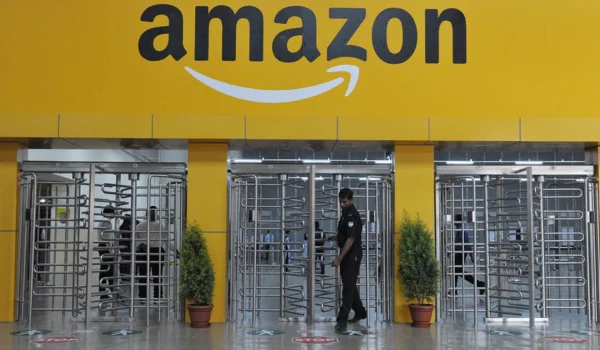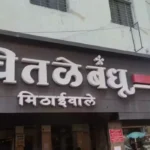Amazon’s fast-growing Delivery Service Partner (DSP) program allows entrepreneurs to manage last‑mile delivery operations under the Amazon brand. With India’s booming e‑commerce demand, the DSP model offers:
- A trusted global brand with consistent delivery volume.
- Low-to-moderate startup costs, especially relative to other ventures.
- Access to Amazon’s technology, operational training, and scalable growth potential.
💰 Investment Breakdown: What It Costs to Launch

📊 Investment Table: Initial & Operational Costs
| Expense Component | Typical Range (₹ lakh) |
| Brand Deposit / Franchise Setup Fee | 1.5 – 5 |
| Office / Warehouse Space (300–500 sq ft) | Rent: ₹0.2 – 0.5 per month |
| Tech & Equipment (PCs, scanner, printer) | 0.3 – 1 |
| Uniforms, Signage, Branding | 0.5 – 1 |
| Working Capital (staff, fuel, utilities) | 2 – 5 |
| Delivery Vehicles (bikes + vans) | Lease preferred; purchase: ₹60K–7L per unit |
| Total Initial Outlay | ₹10 – 15 lakh typically |
- Amazon DSP program requires a deposit and setup cost ranging ₹1.5–5 lakh depending on region and scale.
- Minimum space requirement is 150–250 sq ft, often used to house the office and parcel staging area.
- Equipment costs include laptops (₹30K), printers and scanners (₹25K), and minor office supplies.
- Uniforms and Amazon branding (stickers, signage, vehicle branding) may cost ₹50K–1 L.
- Operating capital estimated ₹2–5 lakh for salaries, fuel, maintenance, and overhead. Vehicle deployment (if purchased) may require ₹2 Cr+, but most operators lease vehicles to keep capex low.
🚦 The Franchise Model: How It Works
What You Manage vs. What Amazon Provides
- DSP franchisees manage daily delivery operations: driver scheduling, vehicle management, parcel loading, performance tracking, and Amazon compliance.
- Amazon provides technology platforms, route optimization, logistics tools, training, and a dedicated support structure.
- You deliver under the Amazon name but run the business independently—hiring staff, maintaining vehicles, and meeting KPI thresholds (delivery timeliness, customer feedback, damage rates).
📈 ROI and Profitability: What to Expect
Business Outlook & Earnings
- Revenue is generated per package delivered—on average, ₹30–50 per parcel. High-volume DSPs deliver 1,000–3,000 packages daily, which can translate to ₹5–15 lakh monthly revenue.
- With disciplined operations, net margins of 20–30% are realistic after expenses like salaries, maintenance, and fuel.
- High-performing DSPs may generate ₹19.2 lakh to ₹38.5 lakh profit per year, depending on fleet size and delivery volume.
- Return on Investment tends to range between 25% and 30%, with breakeven achievable within 6–18 months.
Key Financial Metrics
- Monthly revenue example: ₹8 lakh from parcels
- Operating cost: ₹5–6 lakh
- Net profit: ₹1.5–2 lakh—16–25% margin
- Annual profit: ₹18–24 lakh → ~200% return over initial ₹10 lakh investment
✅ Eligibility & Ideal Candidate Profile
Before applying, ensure you meet these requirements:
- Financial capability: ₹1.5–5 lakh minimum invested capital + ₹6–8 lakh in liquid assets.
- Office/warehouse space: 150–250 sq ft in a commercially accessible area.
- Team-building ability: Hire and manage at least 8 delivery associates initially, scaling up with vans and bikes.
- Technology proficiency: Basic computer skills to use Amazon’s delivery dashboards, scanning tools, and mobile apps.
- Operational discipline: Ability to comply with Amazon’s timelines, customer service standards, and daily performance metrics.
- Legal & documentary compliance: PAN, Aadhaar, GST, local permits as applicable.
📝 Steps to Apply: Your Roadmap to Franchise Approval
- Visit Amazon DSP portal and complete initial registration with personal and business details.
- Initial screening by Amazon based on capital, location, and capability.
- Space inspection and territory allocation review. Amazon assesses parcel volume, accessibility, and logistics viability.
- Agreement signing: Amazon issues partner agreement; franchisee pays deposit or setup fee.
- Infrastructure setup: Furnish office, install tech systems, brand logos, order management tools, vehicle branding.
- Training and onboarding: Amazon provides training on processes, staffing, and delivery protocols.
- Soft launch and scaling: Start deliveries, monitor KPIs, scale fleet and staffing, optimize routes using Amazon tools.
⚖️ Pros & Cons of an Amazon Delivery Franchise
✅ Advantages
- Low barrier to entry with modest investment.
- Scalable and growth-friendly: Add vehicles and staff as volume grows.
- Minimal brand risk: Amazon handles branding, customers, and parcel flow.
- Strong support system including tech platforms and regional support.
❌ Risks & Challenges
- Operational intensity: Intensive day-to-day coordination—driver management, vehicle upkeep, route optimization.
- High dependency on Amazon’s policies and commission model—limits pricing flexibility.
- Fleet costs: If opting to buy vehicles rather than lease, capital needs rise sharply (up to ₹2 Cr).
- Labor attrition: Retaining delivery associates can be tough under heavy workload.
- Possible integration negatives: Reddit discussions alert to startup misconceptions; beware of exaggerated earnings claims and ensure transparency.
💡 Pro Tips Before Taking the Plunge
- Visit existing DSP centers to observe operations, volume, and Amazon’s level of local support.
- Interview existing DSP partners to uncover real profit margins, cash flow reality, and contractual clarity.
- Maintain buffer capital for unexpected delays or seasonal slowdowns (at least 3–6 months of operating cost).
- Ensure lease or ownership arrangements for warehouse/office space are stable. Rent is a major operating cost.
- Ensure territory exclusivity or clarity between adjacent DSPs to minimize competition.
🧾 Franchisee Quick Rules of Thumb
- Initial Investment: ₹10–15 lakh (including vehicle leasing)
- Space Needed: 150–250 sq ft office/staging
- Staffing: ~8–15 delivery associates initially
- Revenue Sharing: ~90% stays with franchisee
- Net Margin: ~20–30%
- ROI: ~25–30%, break-even in 6–18 months
- Agreement Term: Typically 2–3 years renewable
🎯 Final Take
An Amazon DSP franchise in India presents a scalable and proven logistics business model—ideal for entrepreneurs with moderate capital, operational willingness, and commitment to service standards. With Amazon providing branding, customers, and technology, risk is limited to execution on the ground. Profit margins of 20–30% and ROI within a year make it potentially lucrative. However, success depends on disciplined fleet and staff management, contract compliance, and consistent performance.

Shashi Kant is the Founder and Editor of BusinessScroller.com, a leading platform for business insights, finance trends, and industry analysis. With a passion for journalism and expertise in business reporting, he curates well-researched content on market strategies, startups, and corporate success stories. His vision is to provide valuable information that empowers entrepreneurs and professionals. Under his leadership, BusinessScroller.com has grown into a trusted source for in-depth articles, customer care guides, and financial expertise.



I am interested in applying for the Amazon Delivery Service Partner (DSP) franchise.
Please guide me with official contact details and next steps.
My location: (city name: Mumbra, PIN Code: 400612).
I’m ready to proceed with the onboarding process
Hi, I’m interested in the Amazon Franchise / Delivery Partner Program. Kindly share the eligibility, investment details, location availability, and application process. Please guide me with the next steps. Thank you.
I am ready to yours buisness partners sir
Iam srinivasaRao redy to take amezon franchise pin code 523226.if available. Pl. Give me details. Email :-kandula2011@gmail.com contact no:-9951792370🙏
I have a great time in this company franchise Haryana pin code please 125050